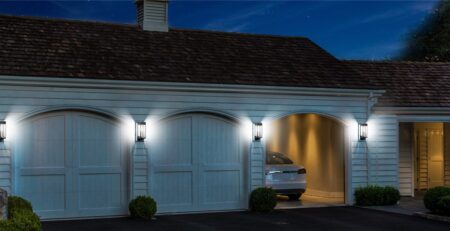Transform Your Outdoor Spaces with Eco-Friendly Solar Path Lights
In recent years, the popularity of solar path lights has surged, driven by a growing awareness of sustainability and the desire for energy-efficient outdoor lighting solutions. These lights not only enhance the beauty of gardens, walkways, and patios but also provide a practical solution for safety and navigation in outdoor spaces. This article explores the various aspects of solar path lights, including their benefits, types, installation, and maintenance, along with the impact they have on energy conservation and environmental sustainability.

Benefits of Solar Path Lights
1. Energy Efficiency
One of the most significant advantages of solar path lights is their energy efficiency. Unlike traditional electric lights that rely on grid power, solar lights harness energy from the sun. During the day, solar panels convert sunlight into electricity, which is stored in rechargeable batteries for nighttime use. This not only reduces energy costs but also minimizes the carbon footprint associated with outdoor lighting.
2. Cost-Effective
While the initial investment in solar path lights may be higher than conventional lighting options, they offer significant long-term savings. Once installed, solar lights require no electricity costs, and the maintenance expenses are typically lower as they have fewer components that may fail. Moreover, many solar lights come with built-in sensors that automatically turn on at dusk and off at dawn, further enhancing their efficiency.
3. Easy Installation
Solar path lights are designed for easy installation, often requiring no wiring or professional assistance. Most models come with stakes that can be directly inserted into the ground, making them ideal for DIY enthusiasts. This ease of installation allows homeowners to quickly and effortlessly enhance their outdoor spaces.
4. Safety and Security
Beyond aesthetics, solar path lights serve an essential function in enhancing safety. They illuminate walkways, driveways, and other outdoor areas, reducing the risk of accidents in the dark. Furthermore, well-lit outdoor spaces can deter potential intruders, thereby increasing the security of the property.
5. Environmental Impact
By using renewable energy, solar path lights contribute to reducing greenhouse gas emissions. They help in conserving electricity, which is often generated from fossil fuels, thus playing a pivotal role in promoting environmental sustainability.
Types of Solar Path Lights
1. Spike Lights: Spike lights are one of the most common types of solar path lights. They consist of a light fixture attached to a spike that can be driven into the ground. These lights are versatile and can be placed along pathways, in flower beds, or along driveways.
2. Post Lights: Post lights are designed to be mounted on existing posts or pillars. They provide a more elegant look and are often used along fences, gates, or larger outdoor areas. These lights can illuminate larger spaces effectively and can serve as decorative accents.
3. Wall-Mounted Lights: Wall-mounted solar lights are perfect for illuminating outdoor walls, patios, or decks. They can be installed at various heights and angles, providing flexibility in lighting design.
4. Deck Lights: Deck lights are specifically designed for installation on decks or staircases. They enhance safety by illuminating potential tripping hazards and add an appealing aesthetic to outdoor living spaces.
Installation of Solar Path Lights
Step-by-Step Guide:
- Choose the Right Location: Identify areas that require illumination, such as pathways, steps, or garden borders. Ensure that the chosen spots receive adequate sunlight during the day.
- Check for Obstructions: Make sure there are no trees, buildings, or other obstructions that may cast shadows on the solar panels.
- Prepare the Ground: Clear the area of debris, rocks, or vegetation to allow for easy installation.
- Insert the Lights: Follow the manufacturer’s instructions to insert the stakes of the lights into the ground. Ensure they are stable and upright.
- Test the Lights: Once installed, allow the lights to charge during the day. Test them at night to confirm they function correctly.
Maintenance of Solar Path Lights
While solar path lights are generally low-maintenance, a few simple steps can ensure their longevity and efficiency:
- Regular Cleaning: Dust and debris can accumulate on the solar panels, reducing their efficiency. Clean the panels periodically with a soft cloth to ensure maximum sunlight absorption.
- Check the Batteries: Over time, rechargeable batteries may degrade. Check and replace them as necessary, typically every 1-3 years, depending on the quality of the batteries.
- Inspect for Damage: Regularly inspect the lights for any physical damage, such as cracks or loose components. Address any issues promptly to maintain performance.
- Seasonal Care: In colder climates, consider removing the lights during winter months to prevent damage from frost or snow. Store them in a dry place until spring.
Conclusion
Solar path lights represent a significant advancement in outdoor lighting, combining sustainability with functionality and aesthetics. Their energy-efficient design, ease of installation, and low maintenance requirements make them an excellent choice for homeowners looking to enhance their outdoor spaces. As the world increasingly shifts towards renewable energy sources, the adoption of solar lighting is likely to grow, contributing to a more sustainable future. By choosing solar path lights, individuals not only improve their property but also play a part in protecting the environment.
If you’re looking for high-quality solar path lights or have any questions about solar lighting solutions, don’t hesitate to reach out to us at info@forigat.com. Our team of experts is ready to help you find the perfect lighting solution for your outdoor space, ensuring you enjoy beautiful, sustainable illumination for years to come.
References
- Solar Energy Industries Association. (2021). “Solar Path Lights: A Comprehensive Guide.” Retrieved from www.seia.org
- Department of Energy. (2020). “Energy Efficiency in Outdoor Lighting.” Retrieved from www.energy.gov
- National Renewable Energy Laboratory. (2019). “The Benefits of Solar Lighting.” Retrieved from www.nrel.gov
- Consumer Reports. (2022). “Best Solar Path Lights of 2022.” Retrieved from www.consumerreports.org







-6-450x231.webp)



Leave a Reply